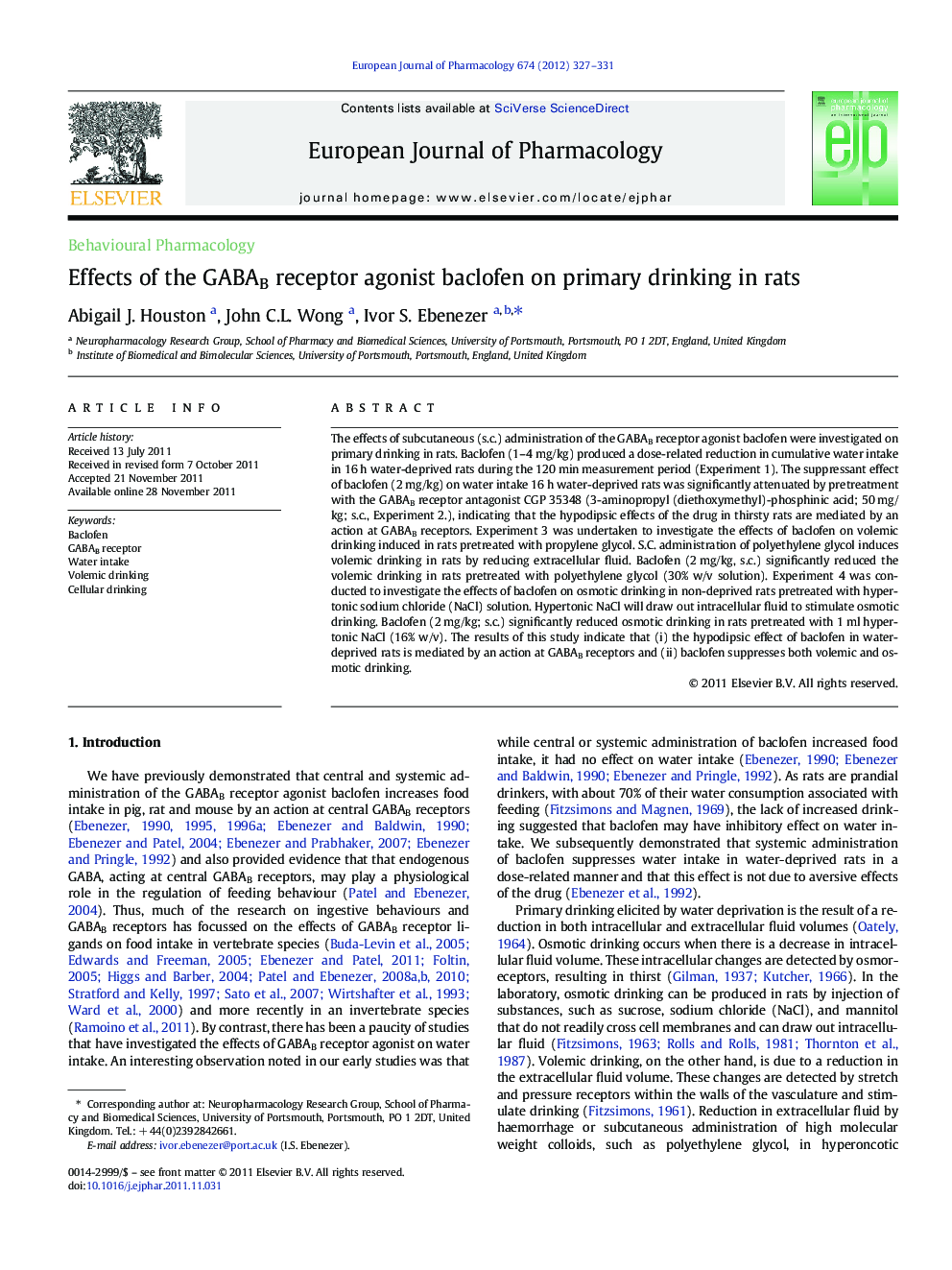| Article ID | Journal | Published Year | Pages | File Type |
|---|---|---|---|---|
| 5829874 | European Journal of Pharmacology | 2012 | 5 Pages |
Abstract
The effects of subcutaneous (s.c.) administration of the GABAB receptor agonist baclofen were investigated on primary drinking in rats. Baclofen (1-4Â mg/kg) produced a dose-related reduction in cumulative water intake in 16Â h water-deprived rats during the 120Â min measurement period (Experiment 1). The suppressant effect of baclofen (2Â mg/kg) on water intake 16Â h water-deprived rats was significantly attenuated by pretreatment with the GABAB receptor antagonist CGP 35348 (3-aminopropyl (diethoxymethyl)-phosphinic acid; 50Â mg/kg; s.c., Experiment 2.), indicating that the hypodipsic effects of the drug in thirsty rats are mediated by an action at GABAB receptors. Experiment 3 was undertaken to investigate the effects of baclofen on volemic drinking induced in rats pretreated with propylene glycol. S.C. administration of polyethylene glycol induces volemic drinking in rats by reducing extracellular fluid. Baclofen (2Â mg/kg, s.c.) significantly reduced the volemic drinking in rats pretreated with polyethylene glycol (30% w/v solution). Experiment 4 was conducted to investigate the effects of baclofen on osmotic drinking in non-deprived rats pretreated with hypertonic sodium chloride (NaCl) solution. Hypertonic NaCl will draw out intracellular fluid to stimulate osmotic drinking. Baclofen (2Â mg/kg; s.c.) significantly reduced osmotic drinking in rats pretreated with 1Â ml hypertonic NaCl (16% w/v). The results of this study indicate that (i) the hypodipsic effect of baclofen in water-deprived rats is mediated by an action at GABAB receptors and (ii) baclofen suppresses both volemic and osmotic drinking.
Keywords
Related Topics
Life Sciences
Neuroscience
Cellular and Molecular Neuroscience
Authors
Abigail J. Houston, John C.L. Wong, Ivor S. Ebenezer,
